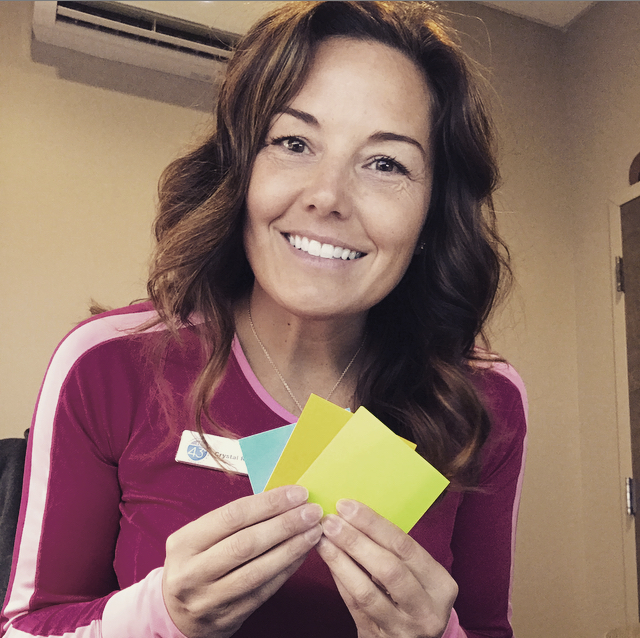Have you ever gotten a new car (or someone close to you did) and in the following week you seem to see that same exact make, model and color car practically everywhere you go? You’re scratching your head thinking, did 50 people in the surrounding towns purchase that same car this week? You know that can’t be possible, yet that is what you see – gunmetal gray GMC Yukons everywhere. Do you know why this occurs? It is not because there are more cars on the road, or a sudden influx of traffic on your drive to work. It happens because you are paying attention to it. What we see in the present moment is determined by what we give our attention to. This happens both consciously and subconsciously.
How many times have you heard or said the words “Pay attention?” It is used in the classroom, on the field, in the workplace and, for me, from my mom, in church during holiday Mass. But what does paying attention even mean? According to Merriam-Webster, paying attention to something is “to concentrate on” it, while to concentrate is defined as to “bring or direct toward a common center or objective: FOCUS.” So, technically, nothing can distract you unless you give your attention to it.
This is much easier said than done. People can get distracted by external stimuli like noise or internal stimuli like daydreaming; these different distractions require different coping strategies, according to Dr. Anthony Rostain, professor of psychiatry and pediatrics at the University of Pennsylvania School of Medicine in Philadelphia.
I know it seems crazy to think that we can control our brains, but science says we can. Case in point: Growing up, my younger sister could cry on demand to get out of loading the dishwasher or to make me look guilty to my parents. As Academy Award-winning as her performances were, this is a skill we all possess. You can make yourself cry in minutes by drawing on a memory of something that makes you sad.
So why would we give our attention to things that distract us? There are lots of schools of thought on how to best approach paying attention and focusing on the task at hand. Our brains have the ability to focus on the things that we need to do if we create and follow a tactical plan. Below are helpful tips to help wrangle your attention to where you need it to be.
1. Write it down: I have a Post-it obsession. I carry them in my purse, some on my desk and a pop-up dispenser on my nightstand. Any time something comes up that I don’t want to forget, I write it down on a Post-it. Don’t like Post-its? Carry around a small journal or a notecard in your pocket for random thoughts. Use these places to write down important reminders. This allows you to let that thought leave your brain and focus all of your energy on the present task.
2. Map out your day: In a day full of tasks, appointments and errands, chances are good you’ll forget to pick up purple trash bags or a child at baseball practice on the way home. Writing your agenda for the day helps you to look at all the jobs to be completed and schedule them in a logical and efficient manner. It also allows you to see what your ability is to work on each task in a given 24-hour period. According to a study published in the journal Science, the human brain has the capacity to handle two tasks simultaneously. When adding a third complicated task, the brain was unable to keep up. The study concluded that people lose track of one of the original tasks and begin making errors.
3. Block it out: Struggling with managing your time? Blocking out or chunking set amounts of time to complete each task will add up over the course of the day. Approach tasks for limited periods of time. This means being real with yourself. Don’t allocate an hour and 50 minutes for a 1 hour and 35 minute movie. We all know going to the movies actually consists of a 20-minute drive to the theater (each way), 6 minutes to stop at the gas station to get candy to smuggle in, the popcorn line is easily a torturous 7, plus the previews are another 15. This event is easily over the 2½ hour mark, so schedule as accurately and honestly as you can.
4. Take 5: If something is inhibiting your productivity, take a 5-minute break. Get up out of your chair. Walk around, have a stretch break, drink some water, do a quick 10 jumping jacks, something to get yourself back on track. If possible, go outside, get a change of scenery and some fresh air. Make sure you set a timer and whatever you do, don’t get sucked into the vortex of social media. Just 5 minutes can allow your body and your mind to reset. When you’ve completed a task, give yourself time to regroup before starting the next task.
5. Schedule fun: Reward yourself for stick-to-itiveness. If you have a daunting task, plan something that brings you joy. When you feel low on motivation, remind yourself of what’s to come when you are done. This doesn’t have to be huge. It can be having a smoothie with a friend, catching up on your favorite Netflix show or walking around the block at lunch. Whatever it is, just don’t forget to treat yourself from time to time.
(Crystal Reynolds is an owner of 43 Degrees North Athletic Club.)










